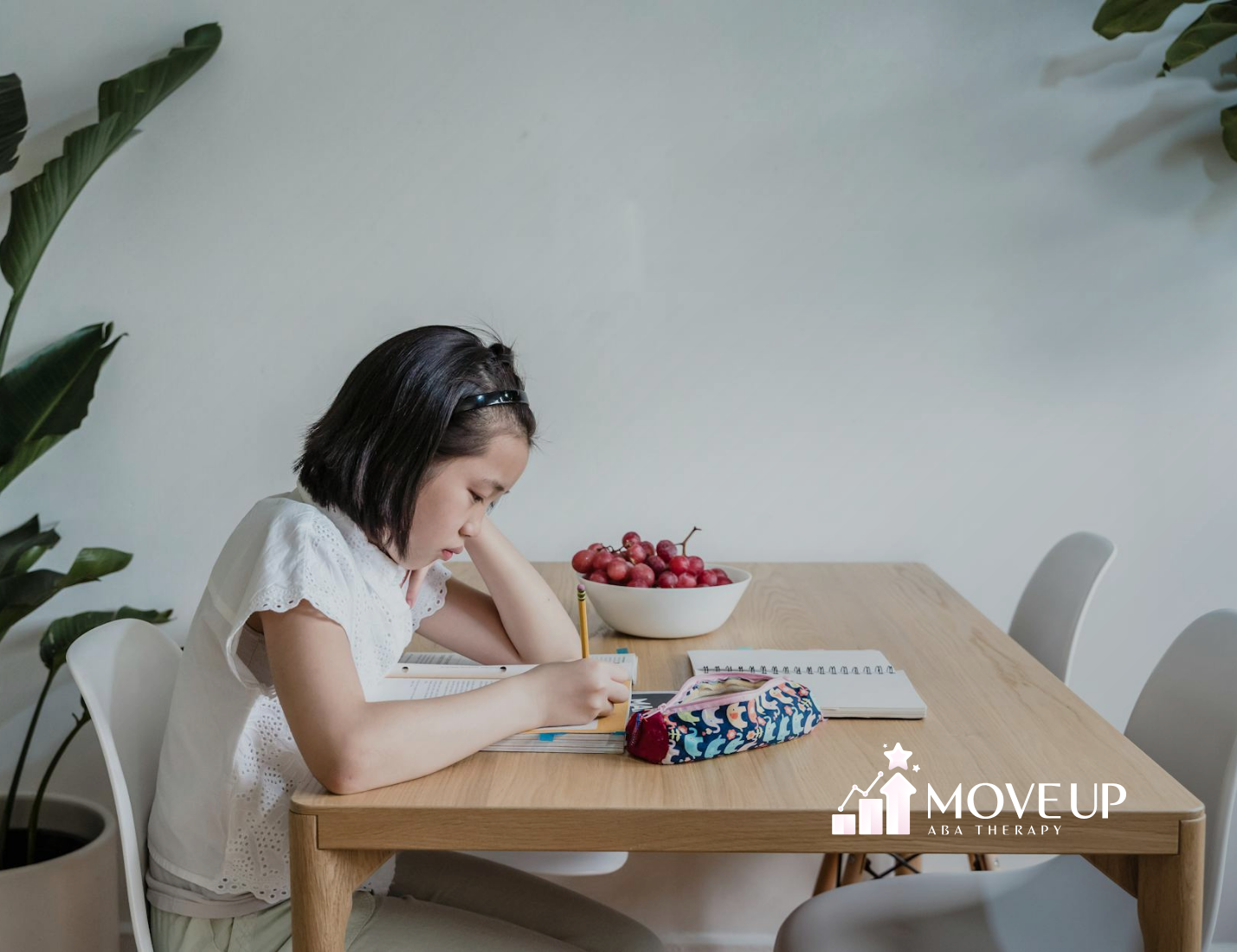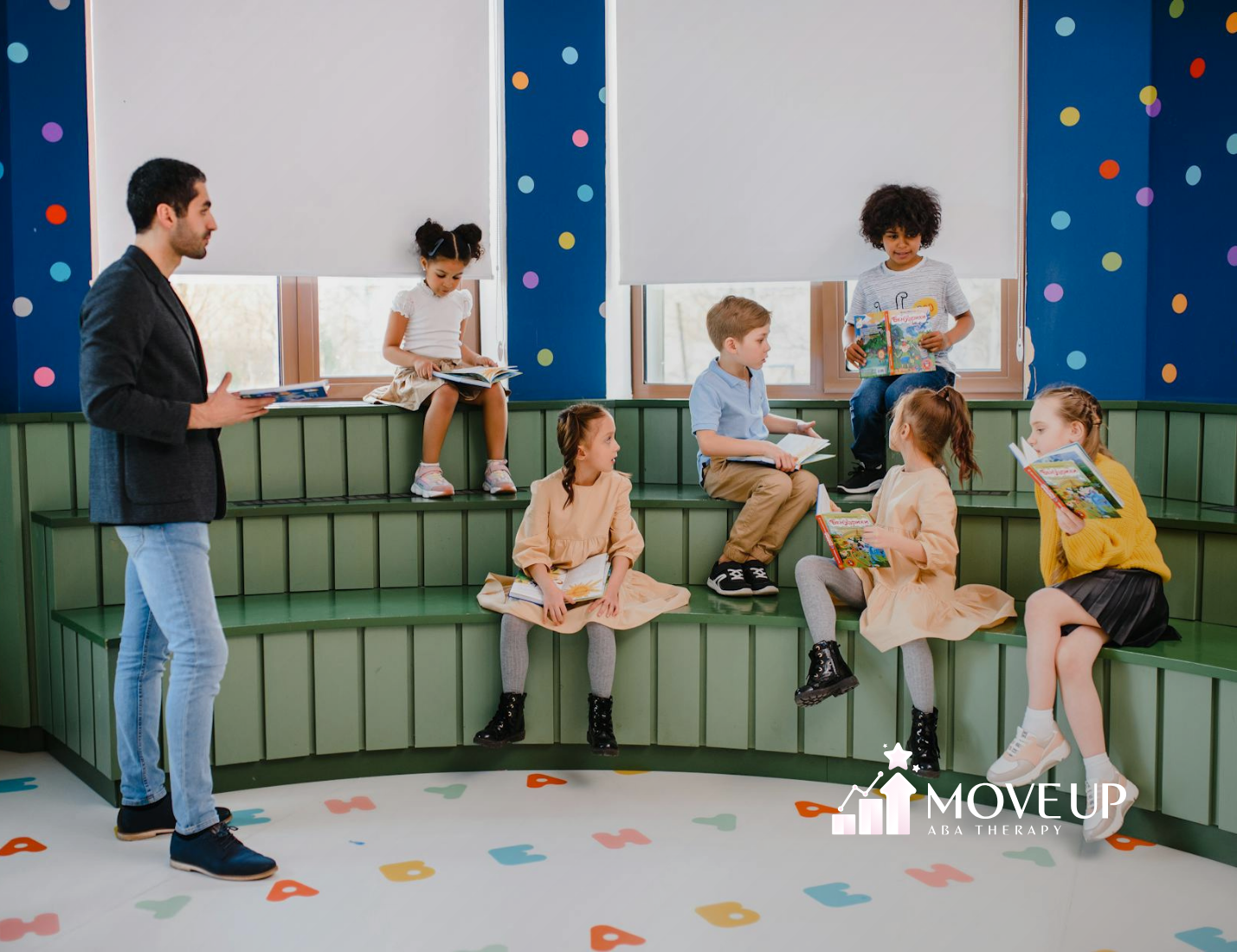Creating a sensory space can change daily life for a child on the autism spectrum. Many autistic children and those with sensory processing disorders often have trouble with sensory overload and regulating their feelings. So, it is important to meet their sensory needs for their health and happiness. A sensory room is a special area that provides calming, sensory-friendly things to look at and touch, supporting their occupational therapy goals. This space helps a child get used to their environment and control their emotions. People use sensory rooms for relaxation, therapy, or to help with new skills. For families and caregivers, these rooms are a good and valuable way to support a child’s needs.
Understanding Sensory Rooms
A sensory room is more than just any room. This is a special place made for people who have sensory challenges, like some autistic kids. In these rooms, you can find soft lighting, gentle sounds, and tactile elements. All of these items are placed there to help the child and meet their needs, highlighting the significant benefits of a sensory room.
These rooms can change and be used for many things. You can use them to help with emotional ups and downs or to help learn and build skills. People use sensory rooms in the home, at school, or in a clinic. Sensory rooms give a lot of good help for kids who are living with autism or sensory processing disorders.
Definition and Purpose
Sensory rooms, also known as therapeutic spaces, are special areas made to help with sensory needs. These places have things like lights, sounds, and items you can touch. The aim is to help people relax or get the right amount of sensory stimulation.
The main goal of a sensory space is to give a safe and caring place where people can deal with sensory challenges. These rooms help children who have sensory overload. Sensory tools like weighted blankets, lights that calm, and different textures are all used for sensory integration.
Sensory rooms also work to support better emotional and physical health. Because they are tailored environments, they can be changed to meet different needs. Some rooms help calm those who feel overstimulated. Some rooms let people explore new things with their senses or work on motor skills, like fine motor skills and gross motor skills, as well as big movements. Caregivers and teachers use these spaces because they know they can give the same good support again and again.
Importance for Autism and Sensory Processing Disorders
Sensory rooms are important because they help people with autism spectrum disorder, developmental disabilities, or sensory processing disorder with their sensory needs. Children on the autism spectrum may find it hard to handle things like loud noises, bright lights, or strong textures each day. If they also have a sensory processing disorder, these sensory challenges can feel even harder.
Inside sensory rooms, there is sensory input, but it is offered in a controlled way. This makes it easier for children to get used to these sensory triggers. For example, using sensory tools for touch can help a child try out textures that they may not like at first.
These rooms also give autistic children a safe space to step away from sensory overload. This helps them be calm and learn to control themselves better. Features like soft, dimmed lighting, avoiding harsh lighting, and gentle sounds are used in the rooms because they help families manage everyday sensory challenges. Sensory rooms give children coping mechanisms so they can handle strong feelings better and adjust more easily. This makes them very helpful for families dealing with the autism spectrum and sensory problems.
Benefits of Sensory Rooms for Autistic Children
Sensory rooms are very helpful for autistic children. The rooms meet sensory needs and help make the senses feel calm, not overwhelmed. When kids face sensory overload, these special spaces make it easier to control feelings.
Sensory rooms also help with school and making friends. They support how kids learn and talk to others. The spaces help children think, manage their emotions, and connect with people, reducing negative behaviors. Families notice their children can focus better and join in more. Tools such as sensory toys and weighted blankets are often used in these rooms. For autistic children, these rooms are an important way to feel good and safe.
Emotional Regulation and Calmness
Sensory rooms are safe places where autistic children can feel calm. These rooms help kids control their emotions when they get too much sensory input. Some kids find bright lights or loud noises hard to handle. Others do not like new textures. This sensory overload can make them feel upset.
In a sensory room, there are different sensory tools. Examples include bubble tubes and headphones that block out noise. Swings or bean bag chairs are also there and help the child relax. The sensory room is a controlled environment. It lets children deal with emotions in a way that is easier for them.
These rooms help during meltdowns and let children get back to feeling good. Soft textures and softer lighting bring peace and lower anxiety. By giving the right sensory input for a child’s sensory needs, the room acts as a sanctuary. It is a place where calmness and comfort can always be found when they need it.
Enhanced Communication and Social Skills
The structured setting in a sensory room helps autistic children grow their social and communication skills. When they use sensory tools, like tactile toys or visual lights, they learn to take turns and work with others.
In these sensory spaces, the chosen lights, sounds, and objects help children communicate. Bright lights and textured mats grab their attention. Sometimes, children who do not use words can show what they need or what they want to do with these tools. This helps them start to join group play or speak up in their way.
Group activities in sensory rooms also give the chance to practice social skills with others. For kids on the autism spectrum, these rooms make it easier and safer to play beside friends. Toys that need teamwork, like simple cause-and-effect games, help make social time enjoyable and less stressful. Over time, the benefits of sensory rooms show up in the way children on the autism spectrum build social skills and connect with others.
Improved Focus and Learning Abilities
Sensory rooms are more than calm places. They help autistic children stay focused and boost their learning. By taking away things that can distract, these rooms let children relax with the right sensory input, so they can pay better attention.
Tools such as weighted blankets or swinging chairs offer sensory stimulation and also help calm your body. This makes it easier to keep your focus. Items like textured sensory blocks or bright, moving panels help children get and stay involved as they learn new things or have therapy. When you make the setting simpler, children can take in and learn important skills with less trouble.
Sensory stimulation also makes learning stronger. When children use many senses at once, it can help them remember things and develop their thinking skills. For example, if an autistic child listens to calming music while matching shapes, the brain learns to work in new ways. Sensory rooms are a good space for children to practice real-world skills, like solving problems, which can help them do well in school.
Essential Elements of a Sensory Room
Optimal sensory rooms give children sensory integration by having different kinds of sensory inputs, like things they can see, hear, or touch. To make a safe space that fits the sensory needs of kids, you need to consider how much space you have available and use the right mix of sensory tools.
Some key pieces to add are lights you can change, soft places to sit, mats you can feel with your hands or feet, and things that help provide sound insulation to block outside noise. These main parts help make sure there is comfort and safety for every child, no matter their own sensory challenges. When you set up a sensory room with these things, you make a therapeutic space that can change and grow with your child and their needs.
Types of Sensory Inputs (Visual, Auditory, Tactile)
A sensory room needs many different things that can help someone feel calm and focused. Visual stimulation and visual elements are important. Gentle lighting and colorful art on the walls can help relax you and get your nervous system to focus. Sound also plays a role in a calming environment. White noise or soft music can keep there from being too much sensory overload. Many kids like touching different things, too. Tactile tools such as bean bag chairs or sensory toys with a rough or soft feel help them explore. These also give them a way to build both gross and fine motor skills. Because of this, the space is great for therapy and can fit the needs of every child.
Selecting Appropriate Equipment
Choosing sensory tools and equipment should match your child’s needs. Sensory toys that the child can touch, calming swings to help with movement, and noise-blocking headphones for quiet all be good choices.
For sensory stimulation, tools such as vibrating pillows and weighted blankets can help with deep pressure. These can calm the nervous system. Bean bag chairs and crash pads give a safe space for kids to relax. Bubble tubes and lava lamps also add something to look at, but care needs to be taken so there is not too much going on for the child.
Think about safety and how well things work. Make sure the furniture can handle being used a lot. If the room is small, modular or folding equipment like SensoryRX systems can make the most of the space. Picking the right sensory tools will help the room grow and change with the child’s sensory experience.
Beginner’s Guide to Setting Up a Sensory Room
You do not need a big space to set up a sensory room. The room can be made in a small spot, like one part of a bedroom. Start by picking simple sensory tools. These can be bean bag chairs, weighted blankets, or bubble tubes.
Be sure to think about your child’s safety and comfort. Put in soft flooring, lights you can change, and sensory toys that fit their age. The special sensory challenges your child has will help you to pick out the right things. You do not need something large for a good result. The right features in the right place will let anyone turn small or new spaces into helpful sensory spots.
What You Will Need: A Checklist
Designing a sensory room starts with a checklist made for your child’s sensory needs.
Sensory Equipment
- Weighted blanket for deep pressure and calming feel
- Sensory swings for in the air movement
- Noise-canceling or blocking headphones
Furniture & Safety
- Bean bag chair to relax in
- Soft foam mats or crash pads to keep safe
- Safe shelving for their sensory toys
Visual, Tactile, and Auditory Inputs
- LED lights to give visual stimulation
- Textured mats for hands and feet to explore
- White noise machines for sound comfort
With these in your sensory system, you give your child a space that will be good for them and help them feel calm and cared for.
Step-by-Step Guide/Process
Below is the process for setting up an engaging sensory room:
| Step | Action |
|---|---|
| Assess Needs | Look at your child’s sensory triggers and what they like and don’t like |
| Choose Location | Find a quiet, safe space that you can control for light and sounds |
| Gather Equipment | Pick the sensory tools, seating, and touch toys you need |
| Install Elements | Set up the equipment so that it is easy for everyone to use and safe |
By following these steps, you can make sure your sensory room meets the needs of people who face sensory challenges. This way, the room can be a safe space that helps with their sensory triggers.
Step 1: Assessing Your Child’s Needs
Start by looking at your child’s sensory challenges and needs. Think about if loud noises or bright lights are too much for them. You may notice that your child likes deep pressure, or they may love to touch different things.
See if your child is more sensitive or less sensitive to things around them. Kids on the autism spectrum can, at times, look for sensory stimulation, but, sometimes, they try to stay away from too much input. Talking with occupational therapists can help you know what sensory tools will work for your child’s needs.
Doing this step helps you get ready to pick sensory elements that make your child feel comfortable. It will also help with better sensory integration for your child.
Step 2: Choosing the Right Location
The place you pick for a sensory room can really affect how well it works. Try to find a quiet spot that is away from loud sounds or flashes of light, especially if you plan on using special lighting as part of the sensory experience. A spare bedroom or even a closet can be a good choice.
Think about how easy it is for your child to get in and move around. Children who have trouble moving may need more space. If your home is not large, you can still use a sensory corner. These are small but can work well. To help make the room darker, put up blackout curtains or use covers for the windows.
Choosing the right spot is one way to make sure your child has a good sensory experience and can enjoy it without things getting in the way.
Step 3: Selecting and Arranging Equipment
Think about which sensory tools and sensory toys you put in the room. You can add swings to help with movement and balance. A bubble tube can give visual stimulation. Soft mats are good for touch and help with sensory integration.
Set up all the things in the room in a good way. Keep noise-canceling headphones by the front door so people can use them as soon as they come in and need a break. Put crash pads next to the swings so everyone can be safe when they play. Have calming things, like bean bag chairs, and also some sensory toys that people can use.
When you set up the room this way, you help the people in the room feel comfortable and want to join in. This also helps meet everyone’s sensory needs in the best way.
Step 4: Safety and Comfort Considerations
Safety and comfort come first in every sensory space. Use soft flooring. Interlocking foam tiles help lower the chance of injury when kids play. Attach heavy things to the walls to stop accidents.
You can ease overstimulation with lights you can adjust. You can also use things like covers on the walls to soften sounds. Add calming things like bean bag chairs. These can help make a safe space so a kid can calm down and feel better.
You need the room to be flexible. This way, it can change as your child’s sensory needs change over time. When you put safety first, the sensory space becomes a good place for kids. They can explore, relax, and feel at home.
Maintaining and Updating Your Sensory Room
A sensory room is always changing. You need to check it often to keep it safe and working well. This way, the equipment will be good for your child. As your child grows, their sensory needs will change. You may need to make some adjustments and add new items to your sensory space.
You can bring in new sensory integration ideas to keep things interesting. This also helps with making the room work better for therapy. Watch how your child uses the sensory space, and ask for feedback. This will help you to make sure it always suits your child’s needs.
Regular Check-ups and Adjustments
Doing routine checks on your sensory room helps keep it safe and working well for a long time. Make sure to often look at things like swings or bubble tubes for any sign of damage or wearing out.
Change the way the room is set up when your child’s needs shift because of new sensory challenges. If your child needs more touch-based fun, add some textured mats or new sensory toys. Get advice from occupational therapists so the room matches your child’s therapy goals.
Checking the room regularly is not just for safety. It also helps the room stay a good place for your child to explore new things with their senses.
Incorporating New Tools and Techniques
To keep the sensory room interesting, it is good to bring in new tools and try out new ideas now and then. You can add sensory tents if you want more privacy, or put in fidget toys that can be turned around for that special touch feeling.
It helps to stay up-to-date with the latest products from those who know about sensory integration tools. For example, a bubble tube that can be used with easy controls will give the room cool and up-to-date benefits.
Try to get your child to take part by putting their favorite sensory toys in the mix with some new things. Doing this makes sure your child is interested and gives the room more value at the same time.
Conclusion
Creating a sensory room can change things for kids with autism or those who face challenges with how they handle different feelings and senses. When you know the key points and the variety of benefits of these rooms, you can make a place that helps with your child’s feelings, makes talking easier, and lets them pay better attention. It is important to change the room to fit what your child needs most, so it feels safe and easy to be in. You should look after the room and update it often. This will help keep the sensory room fun and helpful as time goes on. When you do this, you not only help your child grow but also make a calm space where they can do well. If you want to do more to help your child, you can talk to a professional who knows how to set up a sensory room. This can help you get started in the right way.
Frequently Asked Questions
How often should sensory equipment be replaced?
Sensory equipment should be swapped out if it gets worn out or stops working well. You need to check sensory tools often to look for signs the items might be getting worn, like swings or weighted blankets. When these items be unsafe or no longer help with the sensory needs, you should change them right away.
Can sensory rooms be beneficial for adults?
Yes, sensory rooms are helpful for adults, especially for those with autism spectrum disorder or sensory needs. These rooms provide calming things to look at and touch, which can help with sensory integration. They help adults relax and keep them focused. Also, these spaces can support mental well-being in people who are on the autism spectrum.
What are the budget-friendly options for setting up a sensory room?
You can make a sensory room without spending a lot of money. Try using small spaces you have, like closets or corners. Buy some low-cost items, such as noise-blocking headphones. You can even use things you already have in your home as sensory tools. Think about doing simple projects yourself. Also, check if any programs in your state help pay for things. This way, you can set up a good sensory room for little cost.
Sources:







